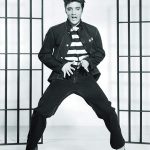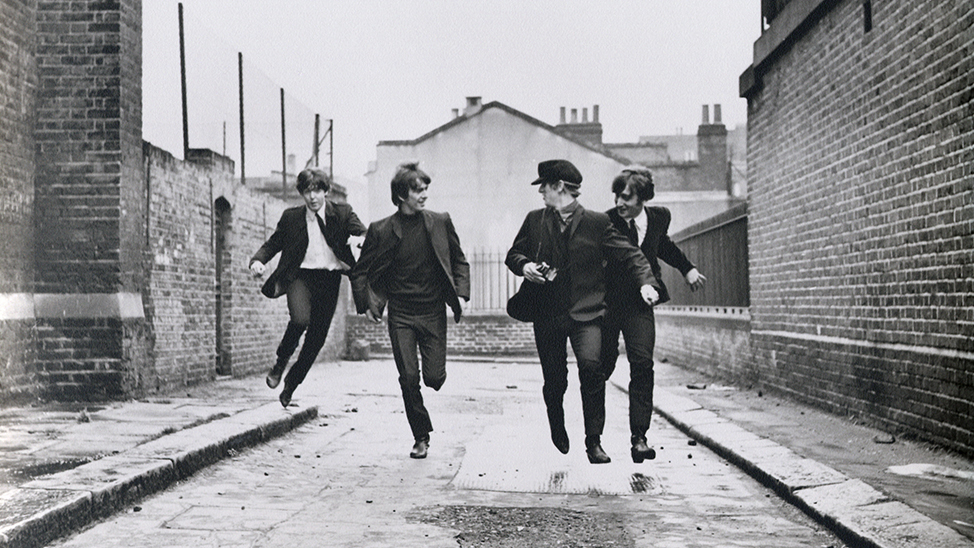
02 Aug Rock & Roll on Film, Part the First + Matador Playlist 6/28/18
In reference to rock journalism, the late Frank Zappa once famously posited that it was ‘written about people who can’t play, for people who can’t read, by people who can’t write.’ Zappa made this observation in 1977 and one can’t help but wonder whether it might be more or less true now than it was then. Either way, Zappa’s epic cynicism would probably be severely strained to accommodate contemporary levels of mendacity. His riposte was witty (there’s a reason why people have been quoting it for the last 41 years) but I must take issue with Frank. I think, or rather I know, that there has been some excellent writing done by people who can write about people who can play for people who can read (amongst whom I number myself, in the third category at least). I’ve been reading about rock music since I were but a wee lad and some of it has been genuinely informative, insightful and moving… but we’ll have to leave that for another day.
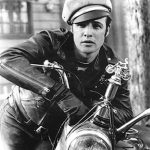 The topic of the moment concerns a different medium: Film. Specifically, rock and roll on film. To extend Zappa’s hypothesis: Movies about people who can’t play/act, for people who can’t watch, by people who can’t write/direct? In some cases, undoubtedly, but there have been numerous notable exceptions over the years and some films that arguably rise to the realm of true cinematic greatness. In the early to mid 1950s, before rock and roll had become a fully viable form, there were a few notable films that managed to communicate something of the essential rock and roll attitude. Foremost among them is ‘The Wild One’ of 1953, the progenitor of the outlaw biker movie genre. Marlon Brando stars as Johnny Strabler, leader of the Black Rebels Motorcycle Club, and in a classic bit of dialogue he expresses an attitude that extends from early Elvis to the Who to the Sex Pistols to late 20th/early 21st century punk:
The topic of the moment concerns a different medium: Film. Specifically, rock and roll on film. To extend Zappa’s hypothesis: Movies about people who can’t play/act, for people who can’t watch, by people who can’t write/direct? In some cases, undoubtedly, but there have been numerous notable exceptions over the years and some films that arguably rise to the realm of true cinematic greatness. In the early to mid 1950s, before rock and roll had become a fully viable form, there were a few notable films that managed to communicate something of the essential rock and roll attitude. Foremost among them is ‘The Wild One’ of 1953, the progenitor of the outlaw biker movie genre. Marlon Brando stars as Johnny Strabler, leader of the Black Rebels Motorcycle Club, and in a classic bit of dialogue he expresses an attitude that extends from early Elvis to the Who to the Sex Pistols to late 20th/early 21st century punk:
Girl: Hey Johnny, what are you rebelling against?
Brando: Whaddya got?
The essence of rock and roll in a nutshell.
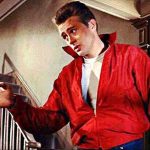 In 1955 came Nicholas Ray’s classic ‘Rebel Without A Cause’ featuring James Dean as the eternal embodiment of the tormented American teenager (despite Dean being 24 at the time of filming). Post-war generational conflict, ineffectual parenting, substance abuse, hooliganism and the decay of middle class values all figure as themes in ‘Rebel’ and in future films ranging from ‘Quadrophenia’ (1978) to ’Purple Rain’ (1984) to ‘8 Mile’ (2002). In the later 1950s, as rock and roll began to integrate (perhaps not the right word) into mainstream American culture, films that were either specifically about the music or featured it as a key element began to appear. The old Hollywood studio system was well into decline and post-War youth culture was on the rise. It didn’t take long before the motion picture industry began to take notice and start looking for vehicles to cash in on the newly lucrative teen market.
In 1955 came Nicholas Ray’s classic ‘Rebel Without A Cause’ featuring James Dean as the eternal embodiment of the tormented American teenager (despite Dean being 24 at the time of filming). Post-war generational conflict, ineffectual parenting, substance abuse, hooliganism and the decay of middle class values all figure as themes in ‘Rebel’ and in future films ranging from ‘Quadrophenia’ (1978) to ’Purple Rain’ (1984) to ‘8 Mile’ (2002). In the later 1950s, as rock and roll began to integrate (perhaps not the right word) into mainstream American culture, films that were either specifically about the music or featured it as a key element began to appear. The old Hollywood studio system was well into decline and post-War youth culture was on the rise. It didn’t take long before the motion picture industry began to take notice and start looking for vehicles to cash in on the newly lucrative teen market.
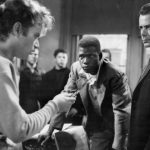 Released in 1955, ‘Blackboard Jungle’ was a bit ahead of the curve but ‘Rock Around the Clock’ by Bill Haley and his Comets featured prominently in the soundtrack. The rockin new beat created a sensation and kids all over the western world started going apeshit and tearing up movie theater seats, apparently missing out on the movie’s alarming portrayal of teen hooliganism. The success of the film propelled Bill Haley to stardom. Haley was perhaps an imperfect vessel to help usher in the rock n’ roll revolution—30 years old when fame hit, portly, and prone to dressing his group in matching plaid dinner jackets—but he was in the right place at the right time. A couple of precocious teenagers in Liverpool, Lennon and McCartney by name, could not help but get swept up in the fervor. More on them later. (‘Blackboard Jungle’ also made a star out of Sidney Poitier—nearly 30 years old at the time but portraying a high schooler, fairly convincingly.)
Released in 1955, ‘Blackboard Jungle’ was a bit ahead of the curve but ‘Rock Around the Clock’ by Bill Haley and his Comets featured prominently in the soundtrack. The rockin new beat created a sensation and kids all over the western world started going apeshit and tearing up movie theater seats, apparently missing out on the movie’s alarming portrayal of teen hooliganism. The success of the film propelled Bill Haley to stardom. Haley was perhaps an imperfect vessel to help usher in the rock n’ roll revolution—30 years old when fame hit, portly, and prone to dressing his group in matching plaid dinner jackets—but he was in the right place at the right time. A couple of precocious teenagers in Liverpool, Lennon and McCartney by name, could not help but get swept up in the fervor. More on them later. (‘Blackboard Jungle’ also made a star out of Sidney Poitier—nearly 30 years old at the time but portraying a high schooler, fairly convincingly.)
All manner of proto-rock and roll films were to follow, featuring performances by Haley, Chuck Berry, Fats Domino, Chubby Checker, Little Richard and others, but here’s where we begin to split hairs between films that incorporated rock & roll elements versus films that embodied rock & roll. Consider, then, ‘Jailhouse Rock.’ Released in 1957, before ‘Elvis movie’ became a byword for ‘moronic schlock,’ the film takes the troubled teen concept several steps further than ‘Rebel Without A Cause.’ Our hero, Vince Everett (Presley), doesn’t just have issues with parents and teachers—he starts off the film in the stripey hole for manslaughter. His innate musical talent begins to emerge while he’s in pokey and he is variously encouraged, swindled and exploited by his washed-up country singer cell mate and a variety of music biz weasels that he meets after his release. Vince is surly, self-centered, quick tempered and boorish with the ladies. When he grabs and aggressively smooches his co-star, Peggy (Judy Tyler) and she admonishes him for for ‘cheap tactics,’ he replies ‘Them ain’t tactics, honey—it’s just the beast in me.’ Harvey Weinstein couldn’t have said it better. ‘#MeToo’ moments aside, if all ‘Jailhouse Rock’ had to offer was the Elvis-choreographed performance of the title song that would be more than enough. This is the young, lithe, swivel-hipped Elvis in all his sneering glory and nothing that followed in his 33-film cinematic career would ever surpass it.
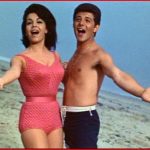 By the time the ‘60s heaved into view a more conceptual bent began to appear with movies themed around typical teen activities such as surfing, bodybuilding, drag racing, sky diving, and hanging out with space aliens. These are, of course, the Beach Blanket franchise films and they introduced the world to those stone rock n’ rollers Frankie Avalon and Annette Funicello. The best of the Beach Blanket films are an enjoyable goof, but the lesser offerings (there are seven in all, made between 1963 and ‘67) are moronic to a fault. For fans of surf music these films might have engendered some special frisson, but growing up in New Orleans they seemed to me as if they were beamed in from another galaxy (which California might as well have been, so far as I was concerned). Actual music stars such as Dick Dale, Little Stevie Wonder (as he was known at the time), Leslie Gore, James Brown, and the Kingsmen made cameos along with an assortment of faded silver screen greats including Boris Karloff, Bela Lugosi, Peter Lorre, Buster Keaton and Basil Rathbone. Regardless of how idiotic these films were I watched them enthusiastically whenever they came on television—and there was always Don Rickles.
By the time the ‘60s heaved into view a more conceptual bent began to appear with movies themed around typical teen activities such as surfing, bodybuilding, drag racing, sky diving, and hanging out with space aliens. These are, of course, the Beach Blanket franchise films and they introduced the world to those stone rock n’ rollers Frankie Avalon and Annette Funicello. The best of the Beach Blanket films are an enjoyable goof, but the lesser offerings (there are seven in all, made between 1963 and ‘67) are moronic to a fault. For fans of surf music these films might have engendered some special frisson, but growing up in New Orleans they seemed to me as if they were beamed in from another galaxy (which California might as well have been, so far as I was concerned). Actual music stars such as Dick Dale, Little Stevie Wonder (as he was known at the time), Leslie Gore, James Brown, and the Kingsmen made cameos along with an assortment of faded silver screen greats including Boris Karloff, Bela Lugosi, Peter Lorre, Buster Keaton and Basil Rathbone. Regardless of how idiotic these films were I watched them enthusiastically whenever they came on television—and there was always Don Rickles.
Setting aside dramatic offerings for a moment, the concert film began to emerge as a genre in the mid-‘60s and one important early entry was the grab-bag concert film ‘T.A.M.I. Show.’ Not exactly a documentary, this was a quick turnaround project staged for the cameras in front of an authentic teenage audience at the Santa Monica Civic Auditorium in late October 1964. The film was pieced together from two shows and rushed into theaters in time for Christmas two months later. The lineup was stellar and impressively integrated for the day: Jan & Dean, the Beach Boys, the Barbarians, Chuck Berry, Marvin Gaye, Diana Ross & the Supremes, Gerry & the Pacemakers, Lesley Gore (the Adele of her day), James Brown, the Rolling Stones, Smokey Robinson & the Miracles and Billy J. Kramer & the Dakotas.
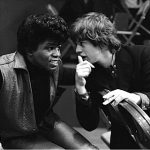 Jan and Dean were the skateboard-riding emcees of the show and there is classic ’60s music, fashion, choreography and hairstyles galore, but the film is remembered primarily for the performances by James Brown and the Rolling Stones. Brother JB, his elaborate pompadour (the Afro-American version known as a ‘conk’) piled sky high, is on the good foot from the moment he hits the stage. The band is super tight—drummer Jabo Starks never takes his eyes off his boss, poised to follow every nuance of Brown’s performance. Brown was in his hyperactive prime and his wildly energetic set is a wondrous thing to behold. He’s like a man possessed and his compact four song segment makes the hapless Billy J. Kramer and the Dakotas (part of Beatles manager Brian Epstein’s talent stable) seem like a group of morticians in comparison. Truth be told, pretty much everyone in this lineup seems pretty tepid and inhibited compared to Brown.
Jan and Dean were the skateboard-riding emcees of the show and there is classic ’60s music, fashion, choreography and hairstyles galore, but the film is remembered primarily for the performances by James Brown and the Rolling Stones. Brother JB, his elaborate pompadour (the Afro-American version known as a ‘conk’) piled sky high, is on the good foot from the moment he hits the stage. The band is super tight—drummer Jabo Starks never takes his eyes off his boss, poised to follow every nuance of Brown’s performance. Brown was in his hyperactive prime and his wildly energetic set is a wondrous thing to behold. He’s like a man possessed and his compact four song segment makes the hapless Billy J. Kramer and the Dakotas (part of Beatles manager Brian Epstein’s talent stable) seem like a group of morticians in comparison. Truth be told, pretty much everyone in this lineup seems pretty tepid and inhibited compared to Brown.
By the time Brother James launches into his third song, ’Please Please Please,’ he is drenched in sweat, eyes clenched shut, testifying with shrieks and moans to the joy and misery of love. He drops to his knees clutching the microphone, a broken man. Danny Ray emerges from the wings with a silk cape and, with one of the Flames, tries to console Brown and lead him tenderly offstage. Hunched over, face in his hands, Brown takes a few hesitant steps towards stage right, stops, shakes off his attendants and staggers back to the microphone to shriek and moan through another round of the chorus. He is draped with the cape again and led once more towards the wings only to collapse—one, two, three more times—before recovering sufficiently to finish off the set with a galvanic, acrobatic version of ‘Night Train.’ This is the iconic James Brown performance of the ‘60s—the Urtext of American soul music.
Woe to anyone unfortunate enough to have to follow this epic act, but somehow that thankless task fell to the Rolling Stones (a decision that Keith Richards later characterized as the biggest mistake of the band’s young career). Compared to some of their meticulously groomed co-performers the Stones do look mildly scruffy and, scandalously, Mick isn’t wearing a tie! Mick executes a brief bit of JB-inspired electric jimmy-leg during the band’s opening song, ‘Around and Around,’ but he quickly thinks better of it and thereon restricts himself to fairly chaste frugging and leaping about. The band sounds reasonably good but after Brown’s set they stood no chance whatsoever of making the impression they had surely hoped they would. Keith Richards and Brian Jones both have the unmistakable look of young men who are already sailing too close to the wind.
The Stone’s set included only one original song (the unremarkable ‘Off the Hook’) and ends with two pointless extended vamps (‘I’m Alright’ and ‘Let’s Get Together’), the latter of which serves for all the performers and dancers to pour onstage for a collective final shake and shimmy. There were no authorized home video releases of the ‘T.A.M.I. Show’ until 2010 when Shout!Factory finally got all the publishing and performance rights sorted and issued an excellent version on DVD. It was worth the wait, if only for James Brown. (Notes of interest: The house band for the concert consisted of the ‘Wrecking Crew’—a group of legendary L.A. studio musicians. Lurking in the shadows at the back of the stage are Jack Nitzsche, Glen Campbell, Leon Russell, Hal Blaine and others. The dancers include Teri Garr and Toni Basil.)
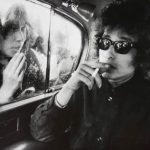 The ‘T.A.M.I. Show’ stands as one of four essential cinematic touchstones of pre-Woodstock rock & roll, the second and third of which are both films by D.A. Pennebaker. The first of these is ‘Don’t Look Back,’ a cinema verite document of Bob Dylan’s 1965 solo concert tour of England. It’s a fantastic film with memorable performances and scenes of life on the road, all captured in lustrous black and white. The film begins with a famous proto-music video sequence—a static shot of Dylan standing in a New York alleyway as ‘Subterranean Homesick Blues’ plays. Dylan, looking rather bored, sequentially discards a stack of cue cards bearing key words and phrases from the song—an inspired visual trope that has been appropriated many times since. The film delivers an unvarnished portrait of Dylan as moody, brilliant, and willfully obscure, determined to defy the expectations of a world that scrutinizes him incredulously as the harbinger of perplexing social changes. As an intimate, unscripted portrait of an artist and the whirlwind of fame, desire and curiosity surrounding him, ‘Don’t Look Back’ was truly groundbreaking—rock film as art cinema—and it remains justly revered and highly influential. Two months after Dylan’s tour of England he would set the music world on its ear and ignite a firestorm of controversy when he debuted his electric band at the 1965 Newport Folk Festival.
The ‘T.A.M.I. Show’ stands as one of four essential cinematic touchstones of pre-Woodstock rock & roll, the second and third of which are both films by D.A. Pennebaker. The first of these is ‘Don’t Look Back,’ a cinema verite document of Bob Dylan’s 1965 solo concert tour of England. It’s a fantastic film with memorable performances and scenes of life on the road, all captured in lustrous black and white. The film begins with a famous proto-music video sequence—a static shot of Dylan standing in a New York alleyway as ‘Subterranean Homesick Blues’ plays. Dylan, looking rather bored, sequentially discards a stack of cue cards bearing key words and phrases from the song—an inspired visual trope that has been appropriated many times since. The film delivers an unvarnished portrait of Dylan as moody, brilliant, and willfully obscure, determined to defy the expectations of a world that scrutinizes him incredulously as the harbinger of perplexing social changes. As an intimate, unscripted portrait of an artist and the whirlwind of fame, desire and curiosity surrounding him, ‘Don’t Look Back’ was truly groundbreaking—rock film as art cinema—and it remains justly revered and highly influential. Two months after Dylan’s tour of England he would set the music world on its ear and ignite a firestorm of controversy when he debuted his electric band at the 1965 Newport Folk Festival.
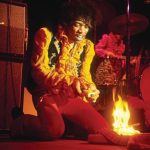 The Monterey International Pop Music Festival was held the weekend of June 16—18, 1967, at the county fairgrounds in Monterey, California. It was one of the first major gatherings of established and emerging music stars and ‘Monterey Pop,’ Pennebaker’s highly regarded documentary, ensured that it would have a life well beyond the event itself. The festival featured Janis Joplin & Big Brother, Jimi Hendrix, Otis Redding, Ravi Shankar, The Who, Jefferson Airplane, the Grateful Dead, Eric Burdon & the Animals, the Mamas & the Papas, Canned Heat, Country Joe & the Fish, Moby Grape, Buffalo Springfield, the Byrds, Quicksilver Messenger Service and others.
The Monterey International Pop Music Festival was held the weekend of June 16—18, 1967, at the county fairgrounds in Monterey, California. It was one of the first major gatherings of established and emerging music stars and ‘Monterey Pop,’ Pennebaker’s highly regarded documentary, ensured that it would have a life well beyond the event itself. The festival featured Janis Joplin & Big Brother, Jimi Hendrix, Otis Redding, Ravi Shankar, The Who, Jefferson Airplane, the Grateful Dead, Eric Burdon & the Animals, the Mamas & the Papas, Canned Heat, Country Joe & the Fish, Moby Grape, Buffalo Springfield, the Byrds, Quicksilver Messenger Service and others.
Pennebaker was tasked with assembling a coherent, compact, and artistically compelling document from an event with dozens of performances by over 30 artists—quite a different task from following Bob Dylan and his small touring posse around England. To that end, most of the bands—18 out of 31—did not make the cut for the film, and I’m assuming we should be grateful for that (the Criterion Collection box set of the film includes a disc of all the outtakes, a number of which range from unremarkable to just dreadful).
The introductory portion of the film has the (now) obligatory footage of some of the nuts and bolts aspects of concert production along with scenes of groovy concert goers arriving, cops milling about (including a police chief predictably predicting mayhem), musicians socializing and doing sound checks, planes landing, etc.. Once the concert gets going the rhythm of performance sequence/audience reaction/crowd scene is established. It all seems like standard fare now but with ‘Monterey Pop’ Pennebaker was creating the visual language of the concert documentary, the basic architecture of which has remained largely intact ever since.
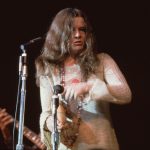 Some of the standout images from the film are Janis Joplin skipping gaily offstage after her heart-rending version of ‘Ball and Chain’; horrified stage hands risking getting bludgeoned by Pete Townshend’s guitar as they scramble to rescue microphones and stands at the chaotic conclusion of the Who’s set; the vapor from Otis Redding’s breath during his beautifully backlit segment; the faces of terrified hippies as Jimi Hendrix ritually torches his guitar at the end of ‘Wild Thing.’ The cameras capture members of the Hells Angels milling about—a portent of things to come—but the overall vibe is unadulterated peace, love and grooviness. It was the Summer of Love and the party would last for about two and a half more years before… well, we’ll get there soon enough.
Some of the standout images from the film are Janis Joplin skipping gaily offstage after her heart-rending version of ‘Ball and Chain’; horrified stage hands risking getting bludgeoned by Pete Townshend’s guitar as they scramble to rescue microphones and stands at the chaotic conclusion of the Who’s set; the vapor from Otis Redding’s breath during his beautifully backlit segment; the faces of terrified hippies as Jimi Hendrix ritually torches his guitar at the end of ‘Wild Thing.’ The cameras capture members of the Hells Angels milling about—a portent of things to come—but the overall vibe is unadulterated peace, love and grooviness. It was the Summer of Love and the party would last for about two and a half more years before… well, we’ll get there soon enough.
Beyond its distinction as the first real rock concert documentary, ‘Monterey Pop’ is justly celebrated for capturing breakout performances by Hendrix, Joplin, Redding, Shankar and the Who. All of these artists had been laying the groundwork for years but after Monterey they were bonafide stars. It’s Hendrix, however, who makes the most profound impression. There are guitar slingers aplenty in ‘Monterey Pop’ but no one had ever handled the instrument with the casual brilliance and total command of Hendrix. His lethal combination of charisma, wildman showmanship, virtuosity and overt sexuality remain mind-boggling to this day. Tragically, Redding would die in a plane crash six months after Monterey and Hendrix and Joplin would both be dead within three years. Hendrix and Joplin were both 27, Redding was 26, and their performances at Monterey remain high water marks in their all-too-brief careers.
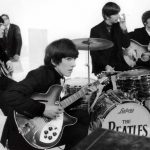 The final pillar of mid-60s rock cinema brings us back to those Liverpool lads previously mentioned. They had not been idle—far from it—and in 1964 the Beatles broke globally like a mop-topped tidal wave. Like other music sensations before them (Bing Crosby, Frank Sinatra, Pat Boone, Elvis, etc.) they signed up to make a film to extend and reap profit from their surging stardom. The movie that resulted, ‘A Hard Day’s Night,’ directed by Richard Lester, was unlike anything before or since. Arriving when it did and as it did ‘A Hard Day’s Night’ was a revelation. The Beatles and Beatlemania were a new phenomenon and no group or artist had ever been presented to the public in such an original fashion. We now live in infinitely more cynical and media-oversaturated times but ‘A Hard Day’s Night’ remains the standard by which all such films will forever be judged.
The final pillar of mid-60s rock cinema brings us back to those Liverpool lads previously mentioned. They had not been idle—far from it—and in 1964 the Beatles broke globally like a mop-topped tidal wave. Like other music sensations before them (Bing Crosby, Frank Sinatra, Pat Boone, Elvis, etc.) they signed up to make a film to extend and reap profit from their surging stardom. The movie that resulted, ‘A Hard Day’s Night,’ directed by Richard Lester, was unlike anything before or since. Arriving when it did and as it did ‘A Hard Day’s Night’ was a revelation. The Beatles and Beatlemania were a new phenomenon and no group or artist had ever been presented to the public in such an original fashion. We now live in infinitely more cynical and media-oversaturated times but ‘A Hard Day’s Night’ remains the standard by which all such films will forever be judged.
Consider ‘A Hard Day’s Night’ as counterpoint to ‘Don’t Look Back.’ Both were shot in black and white in England within a year of one another as chronicles of a day (or days) in the life of touring musicians—performing, rehearsing, interacting with fans, hanging out between gigs, giving interviews, going to parties, sending up establishment types, etc.. On one hand is the snarly, enigmatic Dylan, on the other are the witty, charming Beatles. One film is scripted and the other is not, but one of the keys to the appeal of ‘A Hard Day’s Night’ is that the film allows the Beatles to, more or less, be themselves. Unlike Elvis, they don’t play race car drivers, cowboys or crop duster pilots—they’re just John, Paul, George and Ringo—and the film is as much of a vehicle for the concept of ‘the Beatles’ as distinct personalities as it is a pitch for their music. Now, were the Beatles actually as witty and charming in reality as Dylan was snarly and enigmatic? By most accounts, yes, though not all the time. They were, after all, human.
‘A Hard Day’s Night’ is a wonderful film. In the larger scheme of things it may, ultimately, be little more than a bit of fluff, a lighthearted romp with some great songs for accompaniment, but it’s wonderful nonetheless. It’s a beautifully zeitgeisty slice of a more innocent time and whenever I watch it it makes me yearn for those days o yore. They might not have been your yore, but they were my yore—to a degree—and I love this film. It’s fun. It makes me feel good. As Robert Ebert put it, ‘A Hard Day’s Night’ is ‘one of the great life-affirming landmarks of the movies.’ IMHO, anyone who does not enjoy this film should be regarded with thinly veiled suspicion. There is a strong likelihood that such a person is a grinch.
 The Beatles went on to make ‘Help!’ in 1965, and despite retaining Richard Lester as director, it was not nearly as successful as its predecessor. Weighed down by a substantially larger budget and the attendant obligation to make use of it, ‘Help!’, though occasionally amusing, simply tries too hard. The spontaneous feel and simplicity of ‘A Hard Day’s Night’ are essential to its enduring appeal and ‘Help!’ inevitably sinks under the weight of its effort to be both zany and epic. Watching the film again recently I found it to bear almost unwatchable—I turned it off before I got to the end. The Beatles’ involvement with cinematic projects continued with ‘Magical Mystery Tour,’ 1967, ‘The Beatles: Yellow Submarine,’ 1968, and ‘Let It Be,’ 1970. ‘Magical Mystery Tour’ is an unfocused made-for-television muddle—not surprising as all four Beatles are credited as co-directors and the script was semi-improvised based upon handwritten notes. ‘Magical Mystery Tour’ was considered a flop but it has its amusing moments and the soundtrack album remains my overall favorite Beatles record.
The Beatles went on to make ‘Help!’ in 1965, and despite retaining Richard Lester as director, it was not nearly as successful as its predecessor. Weighed down by a substantially larger budget and the attendant obligation to make use of it, ‘Help!’, though occasionally amusing, simply tries too hard. The spontaneous feel and simplicity of ‘A Hard Day’s Night’ are essential to its enduring appeal and ‘Help!’ inevitably sinks under the weight of its effort to be both zany and epic. Watching the film again recently I found it to bear almost unwatchable—I turned it off before I got to the end. The Beatles’ involvement with cinematic projects continued with ‘Magical Mystery Tour,’ 1967, ‘The Beatles: Yellow Submarine,’ 1968, and ‘Let It Be,’ 1970. ‘Magical Mystery Tour’ is an unfocused made-for-television muddle—not surprising as all four Beatles are credited as co-directors and the script was semi-improvised based upon handwritten notes. ‘Magical Mystery Tour’ was considered a flop but it has its amusing moments and the soundtrack album remains my overall favorite Beatles record.
‘Yellow Submarine’ served to fulfill the final installment in the Beatles’ three-movie deal with United Artists. The band hadn’t been pleased with ‘Help!’ and an animated film seemed like a good way to honor their commitment in the least impactful way (the band’s contract did require that they appear in person, hence the brief live-action cameo at the end of the film). The movie is a blast and I remember feeling like I was walking on air when I saw it on the big screen back in the day. The soundtrack album contains only two new songs, the rest being cobbled together from previously released material and orchestral music from the film—so more or less the opposite of ‘Magical Mystery Tour’: Great film, soundtrack not so much. I was stunned and somewhat disappointed to discover, years later, that the Beatles themselves didn’t supply their voices in their own film—a detail that escaped me at the time.
 ‘Let It Be’ chronicles the last-gasp days of the Beatles and it remains a controversial document to this day. Reticence over the portrayal of the band’s demise has prohibited its release to the home video market and I haven’t seen the film since shortly after it hit the theaters, 48 years ago. My recollections of the film are hazy but I know that I was enthralled, getting a glimpse of the Beatles actually at work, writing and recording songs. The soundtrack album remains a perennial favorite and even if the band was disintegrating in the process the songs and the playing are fantastic. For all of the dissent, the closing segment of the band playing its final public concert on the roof of Apple headquarters on Savile Row is a bittersweet joy. In the final reckoning, if all the Beatles had given the world of cinema was ‘A Hard Day’s Night’ it would have been more than enough.
‘Let It Be’ chronicles the last-gasp days of the Beatles and it remains a controversial document to this day. Reticence over the portrayal of the band’s demise has prohibited its release to the home video market and I haven’t seen the film since shortly after it hit the theaters, 48 years ago. My recollections of the film are hazy but I know that I was enthralled, getting a glimpse of the Beatles actually at work, writing and recording songs. The soundtrack album remains a perennial favorite and even if the band was disintegrating in the process the songs and the playing are fantastic. For all of the dissent, the closing segment of the band playing its final public concert on the roof of Apple headquarters on Savile Row is a bittersweet joy. In the final reckoning, if all the Beatles had given the world of cinema was ‘A Hard Day’s Night’ it would have been more than enough.
By the mid-1960s the Italian auteur Michelangelo Antonioni had cemented his reputation as one of the leading lights of European art cinema. His trilogy—‘L’Avventura,’ 1960, ‘La Notte,’ 1961, and ‘L’Eclisse,’ 1962—examining ‘modernity and its discontents’ (as critic Stephen Holden described it) were critical and commercial successes, either despite of or thanks to their obtuse plots and alienated characters (not to mention the beautiful black and white cinematography). Metro-Goldwyn-Mayer took notice and contracted Antonioni to make three English-language films, the first of which, ‘Blow-Up,’ was released in 1966.
 In terms of the melding of true art cinema with rock and roll, ‘Blow-Up’ was, is, and will likely always be the exemplar prime. Set in London in its swinging heyday, this film oozes rock and roll even though the soundtrack (composed by Herbie Hancock) is jazz and R&B-oriented. The protagonist, Thomas the photographer (David Hemmings), is just too cool for words. He cruises around London in his Rolls Royce convertible taking photographs, doing fashion shoots with beautiful models in his similarly too cool mews studio, attending pot parties, having meandering conversations with his artist neighbor, his neighbor’s wife (Sarah Miles) and his agent (Peter Bowles), and romping with Jane Birkin, Gillian Hills, Verushka and Vanessa Redgrave in various states of undress. Good work if you can get it.
In terms of the melding of true art cinema with rock and roll, ‘Blow-Up’ was, is, and will likely always be the exemplar prime. Set in London in its swinging heyday, this film oozes rock and roll even though the soundtrack (composed by Herbie Hancock) is jazz and R&B-oriented. The protagonist, Thomas the photographer (David Hemmings), is just too cool for words. He cruises around London in his Rolls Royce convertible taking photographs, doing fashion shoots with beautiful models in his similarly too cool mews studio, attending pot parties, having meandering conversations with his artist neighbor, his neighbor’s wife (Sarah Miles) and his agent (Peter Bowles), and romping with Jane Birkin, Gillian Hills, Verushka and Vanessa Redgrave in various states of undress. Good work if you can get it.
Along the way, Thomas wanders into Maryon Park and unwittingly photographs a murder in progress. When he realizes what he’s captured on film things start to get spooky. While trying to track down the mysterious Jane (Redgrave)—a witness to, or perhaps participant in, the murder—Thomas stumbles into a facsimile of the Ricky-Tick Club and finds the Yardbirds performing ‘Stroll On’ (otherwise known as ‘Train Kept A-Rollin’). This is the short-lived and legendary Jimmy Page/Jeff Beck lineup (see my last post) and one of the most famous rock n’ roll cameos in cinema history. As the band bashes away (or pretends to) an audience of hippies and hipsters looks on like zombies, emotionless and expressionless, save for one couple dancing near the back of the crowd.
Beck’s Vox AC30 starts to act up and he begins banging on it with his guitar. (Continuity geeks will notice that Beck is playing a burgundy Les Paul at the beginning of the scene but when it comes time for him to start the bashing he’s got some budget-brand semi-hollowbody instead.) As the amp continues to crackle and cut out Beck smashes his prop guitar, stomps on it, and tosses chunks into the crowd. The zombie audience suddenly goes berserk and Thomas ends up in the midst of the scrum, tussling for the disembodied guitar neck. Finding himself in possession of the holy relic he tears himself away and makes a dash for the exit with the mob in hot pursuit. Safely reaching the street he looks down at the guitar neck, thinks ‘What’s this bit of tat?’, tosses it down on the pavement and walks away.
The sense of disaffection portrayed in the Yardbirds sequence and throughout the film suggests an essential emptiness at the core of all the grooviness but, in typical Antonioni fashion, ‘Blow-Up’ offers no resolution, no answers. Make of it what you will, or won’t, but ‘Blow-Up’ is a brilliant film. Obtuse though it may be, it is visually arresting and the film is as mysterious as the unsolved murder it portrays. Or doesn’t.
Building on the success and acclaim of ‘Monterey Pop,’ the rock festival documentary genre began to gather momentum in the late ‘60s, famously culminating in the mother of them all, ‘Woodstock.’ The festival took place from August 15-17, 1969, in Bethel, New York, and I’ve always been a bit baffled as to why the concert ended up as ‘Woodstock’ as it was held in a different county, about 45 miles away from the actual town of Woodstock. I guess ‘Bethel’ just doesn’t have quite the same ring to it.
 As a cinematic offering, I think a pretty convincing argument can be made that ‘Woodstock’ falls well short of ‘Monterey Pop.’ If nothing else, at 185 minutes the film is simply ponderously long and there aren’t enough great performances to sustain interest. For instance, Sha Na Na? What the hell are they doing in this film? And Ten Years After? First of all, Alvin Lee was a hack guitarist—all hopped up blues cliches, speed and no style—and the band’s performance of ‘Going Home’ seems endless. Country Joe and the Fish, John Sebastian, Arlo Gurthrie, Canned Heat—okay, they’re sort of iconic moments, but the film could lose all of those performances and not suffer a bit. The split screen conceit, considered innovative by some, was just distracting to others (or at least to me). Of course there were standout performances—Richie Havens, The Who, Santana, Joe Cocker, Sly & the Family Stone—and I suppose it’s worthwhile to slog through the whole film if only to see Joe Cocker become an instant superstar. A bit more of Joe and the rest and bit less of the hippie slop and this film would be genuinely great.
As a cinematic offering, I think a pretty convincing argument can be made that ‘Woodstock’ falls well short of ‘Monterey Pop.’ If nothing else, at 185 minutes the film is simply ponderously long and there aren’t enough great performances to sustain interest. For instance, Sha Na Na? What the hell are they doing in this film? And Ten Years After? First of all, Alvin Lee was a hack guitarist—all hopped up blues cliches, speed and no style—and the band’s performance of ‘Going Home’ seems endless. Country Joe and the Fish, John Sebastian, Arlo Gurthrie, Canned Heat—okay, they’re sort of iconic moments, but the film could lose all of those performances and not suffer a bit. The split screen conceit, considered innovative by some, was just distracting to others (or at least to me). Of course there were standout performances—Richie Havens, The Who, Santana, Joe Cocker, Sly & the Family Stone—and I suppose it’s worthwhile to slog through the whole film if only to see Joe Cocker become an instant superstar. A bit more of Joe and the rest and bit less of the hippie slop and this film would be genuinely great.
Hendrix, who blew everyone’s minds forever at Monterey, was saddled with a substandard band at Woodstock and there’s a reason why his solo performance of ‘The Star Spangled Banner’ is the one cut that everyone remembers. As to why ‘Woodstock’ is the concert and the film that everyone remembers, I guess it was the right thing in the right place at the right time. For a variety of reasons, Woodstock—the concert, the film, the soundtrack album and the concept—became emblematic of a generation. Not to be too academic about it, but the phenomenon known as the ‘Woodstock Nation’ lasted for approximately four months.
Stay tuned for Part the Second, coming up shortly, and in the meantime here’s a Matador Playlist:
Matador Playlist 6/28/18
Grammar of Life – Charles Bukowski
When Our Love Passed Out on the Couch – X
Jesus Wants Me for a Sunbeam – the Vaselines
I’ve Always Been Crazy – Waylon Jennings
Head On – the Jesus & Mary Chain
Dirt Road – Southern Culture on the Skids
Out On the Tiles – Led Zeppelin
The Big Country – Talking Heads
All Day and All of the Night – the Kinks
Ballad of a Teenage Queen – Johnny Cash
Goin’ Down to Mexico – ZZ Top
A New England – Billy Bragg (duet w/ Bruv Cubbie)
Decatur Street – Twilight Singers
Feel Like Funkin’ It Up – Rebirth Brass Band
Emotional Rescue – The Rolling Stones
Gett Off – Prince & the New Power Generation
The Saturday Boy – Billy Bragg (singalong w/Bruv Cub)
Jesus Built My Hotrod – Ministry
Action Packed – Ronnie Dee
Yes We Can, Pt. 1 – Lee Dorsey
Between the Wars – Billy Bragg (w/ Bruv Cub again)
The Mighty Sparrow – Ted Leo & the Pharmacists
Heart of Steel (feat. Irma Thomas) – Galactic
Harper Valley PTA – Jeannie C. Riley
U Got the Look – Prince & the Revolution
Sexy M.F. – Prince & the New Power Generation
Doublewide – Southern Culture on the Skids
Lost Highway – Hank Williams
Blitzed – the Raveonettes
Mrs. Robinson – the Lemonheads
King of the Road – Roger Miller
Concrete Jungle – Bob Marley & the Wailers
She’s About A Mover – Texas Tornados
Saturday Night Fish Fry, Pts. 1 & 2 – Louis Jordan & his Tympany Five
Big Man with a Gun – Nine Inch Nails
Other Side of This Life – Jefferson Airplane
Venus of Avenue D – Mink DeVille
Shame, Shame, Shame – Denise LaSalle
Bron-Yr-Aur Stomp – Led Zeppelin
Heart Is A Beating Drum – the Kills
The KKK Took My Baby Away – the Ramones
Heart Full of Soul – the Yardbirds
The Great Atomic Power – Southern Culture on the Skids
You Know I’m No Good (feat. Ghost Face Killah) – Amy Winehouse
Feel Like Makin’ Love – Bad Company
In My Head – Queens of the Stone Age
Left of the Dial – the Replacements
A Whiter Shade of Pale – Procol Harum
Song for Zula – Phosphorescent
D’s Car Jam/Anxious Mofo – the Minutemen
Nearly Lost You – the Screaming Trees
Twistin’ the Night Away – Sam Cooke
World Without Tears – Lucinda Williams
Buona Sera – Louis Prima
Happy Trails – Roy Rogers & Dale Evans (feat. Trigger on Supreme Court Blues)
Taxi – Bryan Ferry

